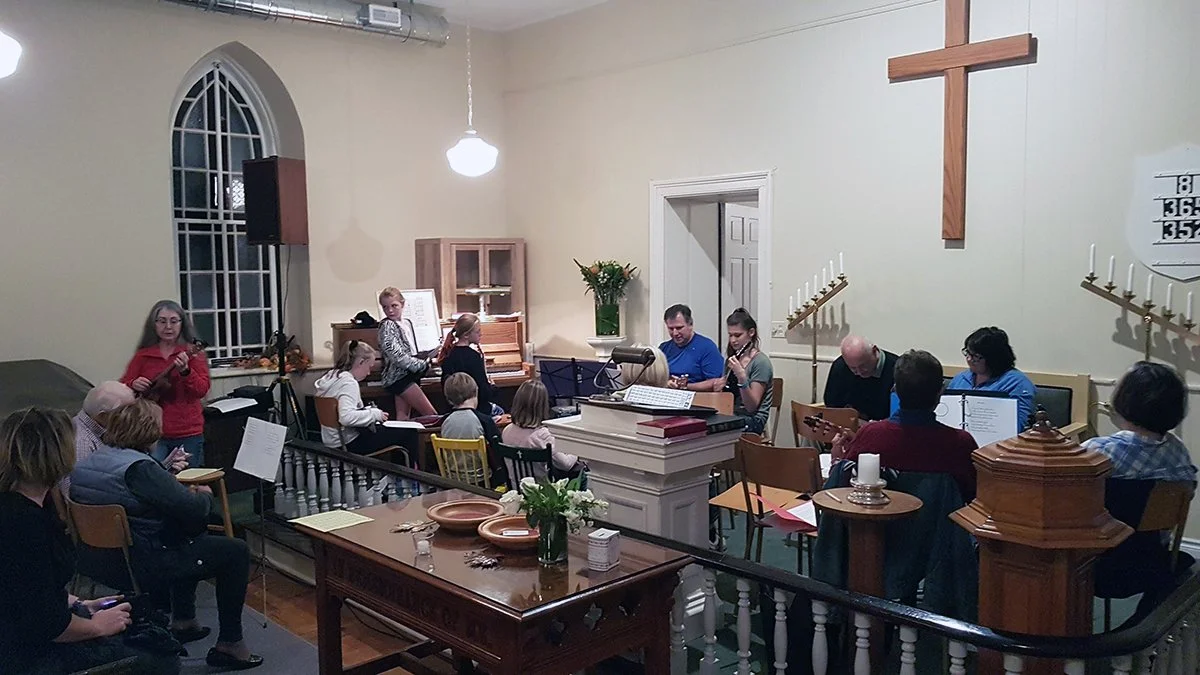In admiring the stunning Gothic cathedrals that overlook our downtown centres, we can all agree that places of worship hold our collective cultural heritage. But what about our smaller faith community buildings? The rural church in a Nova Scotia village that may not have been built by hundreds of people, but by a local shipwright in the off-season, or the chapel in an Alberta community constructed by one mason and farmers, bringing rocks off their farms?
People were baptized, married, and buried within those walls. They celebrated the high points of life together or rallied around an important cause for the greater community. Meals were had, friendships were made, communities were strengthened. Folks learned how to dance in the hall, cook in the kitchen, play basketball in the gym, and did homework in the classrooms after school. Whether large or small, built by many or few, our buildings, sanctuaries, halls, lounges, and classrooms have been gathering places for the congregational and the greater community for decades. They, like the cathedrals, hold our cultural heritage and memorable history.
Ukulele Group. Kilworth United, London
However, since the pandemic, in-person gatherings have been limited, as many communities have transitioned to streaming their services and events virtually. As a result, gatherings have felt distant, leaving many members craving community and the chance to laugh, cry, and celebrate together. As we slowly start to open back up and hopefully return to public life again, we will want to come together not only for worship, but for Tai Chi, antique radio clubs, singing, sewing classes, learning English, and many other community gatherings.
Baking. Trinity United, Shediac
Looking ahead to when we can welcome our communities back, now is the time to improve the comfort, health, and understanding of our buildings. Before the doors open, a fresh coat of paint might be in order but why not start to focus on making our spaces more energy-efficient and user-friendly? Installing LED lights, water-efficient fixtures, and energy-efficient appliances will make for a more environmentally friendly kitchen or facility, as will caulking leaky windows against the winter cold.
Bollywood Night. Norval United, Norval
This is also a perfect opportunity to start tracking your energy and operational costs, for a better understanding of what fair community rental rates should be. Energy tracking is a critical piece of that calculation that most people miss. You can have mission rentals at deep discounted prices, of course, but you should make sure that the regular rentals are actually covering your costs.
The more you can learn about your building, the more you can save energy, minimize maintenance costs, and maximize the usage of your amazing faith community building. You can utilize our professional knowledge with virtual Green Audits that look at energy, air quality, food, water, waste, maintenance, rental agreements, heritage, and much more.
By thinking about the opportunity and role your building can play for the greater community, you can help create sustainable income for your faith community, and actively invest that money in energy upgrades, mission work, and strengthening your communities and cultural heritage.
Faithful Footprints Program
The United Church of Canada (UCC) Faithful Footprints program offers grants, tools, and inspiration to help its congregations reduce their carbon footprint. With UCC’s commitment to reducing its greenhouse gases (GHG) emissions 80% by 2050, this one of a kind pro,gram offers up to $30,000 in grants towards energy conservation and renewable energy projects (conditions apply).
Faith & the Common Good is the delivery partner for UCCs Faithful Footprints program. To date, we have engaged over 200 UCC congregations, camps, and buildings across the country. Your participation in the program puts your faith into action and helps UCC reach its target.
Stephen Collette is the Building Manager for Faith & the Common Good and can be reached at 705-652-5159 EDT, scollette@faithcommongood.org




